Container
Containers are increasingly set to replace traditional stowage in holds. Containerization of cargoes is becoming ever more widespread worldwide and almost all products are now transported by container. However, this does not mean that the risks which arise during transport are consequently a thing of the past. The cargoes in containers are still exposed to climatic, biological and chemical stresses, such that the causes of losses which previously occurred in the hold still come about with container transport. If transport is to pass off without loss, selection of a suitable container type is fundamental. However, disparities in the flow of goods mean that suitable containers are not always available, so increasing the significance of cargo care during transport. The following headings contain detailed information about containers.
Standard containers

Standard containers are also known as general purpose containers. They are closed containers, i.e. they are closed on all sides. A distinction may be drawn between the following types of standard container:
High-cube containers
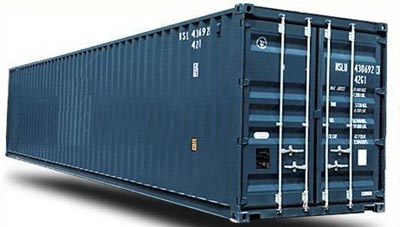
High-cube containers are similar in structure to standard containers, but taller. In contrast to standard containers, which have a maximum height of 2591 mm (8'6"), high-cube containers are 2896 mm, or 9'6", tall. High-cube containers are for the most part 40' long, but are sometimes made as 45' containers.
A number of lashing rings, capable of bearing loads of at most 1000 kg, are mounted on the front top end rail and bottom cross member and the corner posts.
Many 40' containers have a recess in the floor at the front end which serves to center the containers on so-called gooseneck chassis. These recesses allow the containers to lie lower and therefore to be of taller construction.
Hard-top containers
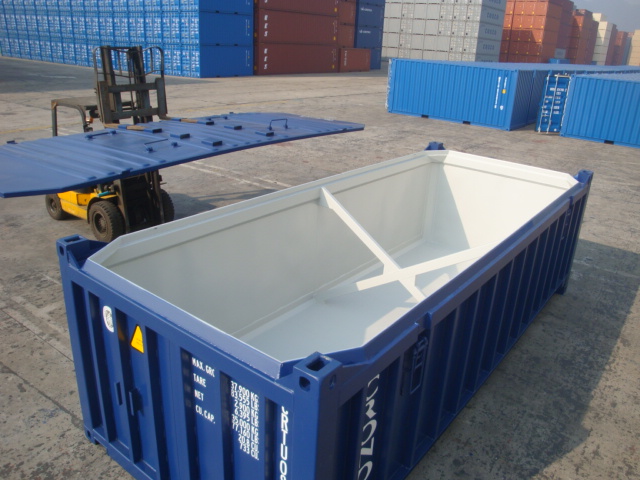
The walls of hard-top containers are generally made of corrugated steel. The floor is made of wood.
It has two typical distinguishing structural features. On the one hand, it is equipped with a removable steel roof. In some types, this roof has points for accommodating forklift trucks, allowing the roof to be lifted by forklift truck. The roof weighs approx. 450 kg. In addition, the door header may be swivelled out.
These two structural features greatly simplify the process of packing and unpacking the container. In particular, it is very easy to pack and unpack the container from above or through the doors by crane or crab when the roof is open and the door header is swivelled out.
Open-top containers

The walls of open-top containers are generally made of corrugated steel. The floor is made of wood.
It has the following typical distinguishing structural features. The roof consists of removable bows and a removable tarpaulin. The door header may be swivelled out.
These two structural features greatly simplify the process of packing and unpacking the container. In particular, it is very easy to pack and unpack the container from above or through the doors by crane or crab when the roof is open and the door header is swivelled out.
It should be noted, however, that the purpose of the roof bows of an open-top container is not solely to support the tarpaulin but also to contribute to container stability. Flatracks are therefore more suitable for overheight cargoes.
Flatracks
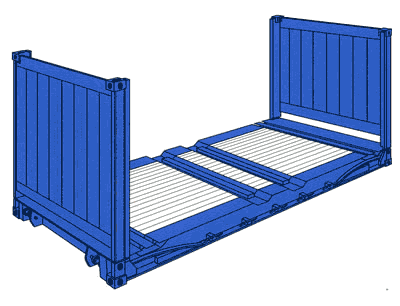
Flatracks consist of a floor structure with a high loading capacity composed of a steel frame and a softwood floor and two end walls, which may either be fixed or collapsible. The end walls are stable enough to allow cargo securing means to be attached and several flatracks to be stacked on top of one another. Flatracks are available in 20' and 40' sizes.
A number of lashing rings, to which the cargo may be secured, are installed in the side rails, the corner posts and the floor. The lashing rings may take loads of up to 2000 kg in the case of 20' flatracks or up to 4000 kg in the case of 40' flatracks.
Some types of 20' flatracks have forklift pockets.
40' flatracks have gooseneck tunnels at each end. In addition, they are sometimes equipped with lashing winches with 2 metric ton lashing belts.
Platforms (Plats)
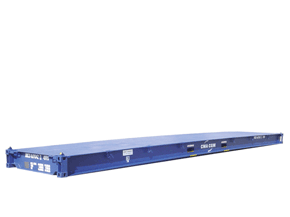
Platforms consist solely of a floor structure with extremely high loading capacity; they have no side or end walls. This high loading capacity makes it possible to concentrate heavy weights on small areas. A platform consists of a steel frame and a wooden floor structure.
Platforms are available in 20' and 40' sizes. 40' platforms have a gooseneck tunnel at each end.
Lashing rings, to which the cargo may be secured, are installed in the side rails. The lashing rings may take loads of up to 3.000 kg.
Ventilated containers

Ventilated containers are also known as passive (naturally) ventilated or coffee containers. Ventilation is provided by ventilation openings in the top and bottom side rails. The openings do not let in spray, to prevent depreciation of the cargo by rain or spray, for example.
If actively ventilated containers are required, i.e. containers with adjustable ventilation, "porthole" containers may be used, which simultaneously act as insulated or refrigerated containers. For more detailed information, see under Insulated and refrigerated containers.
Lashing rings, to which the cargo may be secured, are installed in the upper and lower side rails and the corner posts. The lashing rings may take loads of up to 1,000 kg. The common size for ventilated containers is 20'.
Refrigerated and insulated containers

Refrigerated and insulated containers are mainly available as 20' and 40' containers. A distinction may be drawn between two different systems:
Integral Unit (Integral Reefer Container, Integrated Unit):
This type of refrigerated container has an integral refrigeration unit for controlling the temperature inside the container. The refrigeration unit is arranged in such a way that the external dimensions of the container meet ISO standards and thus fit into the container ship cell guides, for example. The presence of an integral refrigeration unit entails a loss of internal volume and payload.
Porthole containers:
This type of container is often referred to not as a refrigerated container but as an insulated container, as it has no integral refrigeration unit. The lack of a refrigeration unit allows such containers to have a larger internal volume and payload than integral units. On board, the inside of the container is supplied with cold air via the ship's central cooling plant. The air flows through the container in the same way as in integral units. Cold air is blown in at the bottom and the "warm" air is removed at the top.
Bulk containers
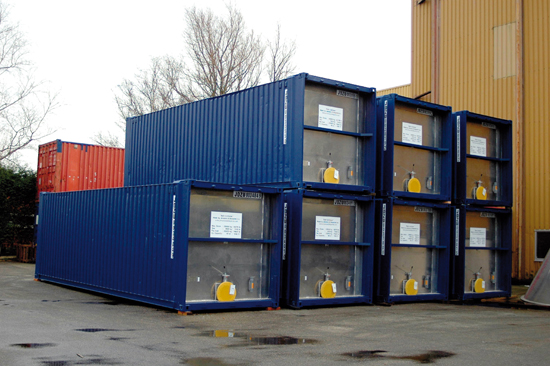
Bulk (or bulk cargo) containers have three loading hatches in the roof, each of a diameter of approx. 455 mm (1 3/4'). The distance between the hatches (center to center) is 1.83 m (6'). On the door side, there are two discharge hatches, which are sometimes equipped with short discharge tubes for guiding the bulk cargo. Alternatively, two unloading hatches may be mounted in the doorways, for emptying the containers.
Such containers may also be used for general cargo. Lashing rings are mounted in the top side rails for securing the cargo. Some bulk containers are equipped with forklift pockets, which allow handling by forklift trucks.
Tank containers

Tank containers must be at least 80% full, to prevent dangerous surging of the liquids in transit. On the other hand, they must not as a rule be over 95% full, or there will not be sufficient ullage space for thermal expansion.
Some hazardous materials must be transported in tank containers with no in- or outlet openings below the surface of the liquid.
Tank containers are generally designed for an operating pressure of up to 3 bar (above atmospheric). The test pressure used is 4.5 bar (above atmospheric).
If the cargo requires temperature-controlled transport, tank containers can be equipped with insulation or heating. The temperature of the cargo may be precisely controlled using temperature sensors.
